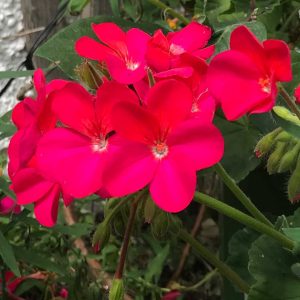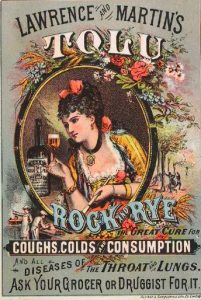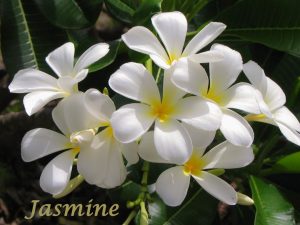Using Carrier Oils in Aromatherapy
Edited: November 13, 2022

It is a general rule in Clinical Aromatherapy that applying pure essential oils without a carrier, is unsafe practice. The well-trained Clinical Aromatherapist is aware that there are a few exceptions to this rule, but even ‘safe’ oils like Melaleuca alternifolia (tea tree) and Lavandula angustifolia (lavender) can trigger a lifelong sensitivity. This highlights the importance of using essential oils under the guidance of a professionally trained Clinical Aromatherapist.
Therapeutic Essential Oils are Powerful.
Any essential oil could cause an allergic reaction if applied undiluted. For those interested in reading more about these dangers Marge Clark writes about her own ongoing personal battle with dermatitis following exposure to lavender oil in her book Essential Oils and Aromatics.
Using Carrier Oils.
Safe practice means treating essential oils with respect and diluting them with a carrier oil: so-called because they carry the essential oil onto or into the skin. All carrier oils are easily absorbed, have a mild or no aroma and are non-volatile. These oils nourish the skin and tissues and if chosen carefully enhance the healing properties of the essential oils.
With the wide range of non-volatile plant oils available, it is surprising to discover that many aromatherapists limit themselves to using grape seed or almond oils. Your choice of carrier oil can make a significant difference in the therapeutic properties, colour, aroma and even the shelf life of your final product. Unlike essential oils, carrier oils can go rancid over time which is why the clinical aromatherapist will generally create the bespoke oil or lotion for each client. You might choose an unscented carrier (like grape seed), lightly scented (such as coconut and jojoba) or more heavily scented (olive and argan for example) – each carrier oil bringing its own unique properties to the blend.
Essential oils are generally diluted at 2% by volume with the carrier oil for adults and at 1% for children and elderly clients. Following these guidelines should ensure safe topical application of most oils although treatment of children and elderly clients should always be undertaken with utmost care and requires specialised education and training. Higher concentrations can be used – up to 10% with some essential oils – but it is important to understand the potential risks involved. Here the professional Clinical Aromatherapist once again relies on their understanding of the chemical properties of both essential oils and carrier oils and the ways in which they interact.
Carrier oils also have cautions and contra-indications for use and so again should be used under the guidance of a Clinical Aromatherapist. E.g. Hypericum should not be used for clients who are taking certain antidepressants and nut oils should obviously never be used with people who have a nut allergy.
Choosing Your Carrier Oils.
Carrier oils should be cold-pressed and as unrefined as possible, meaning that they retain their aroma and are uncontaminated by bleaches or deodorisers. Some, like jojoba, are actually a form of wax and are useful when overproduction of sebaceous oils is a problem (as in acne). Others, like coconut and olive oils, contain fatty acids, polyphenols and plant sterols which feed and moisturise the skin. Some macerated carriers are either too viscose or too expensive to be used as 100% main carriers and therefore can be added to your main carrier at 25% of your carrier blend.
Whether they are nut oils, seed oils or from other vegetable sources, understanding the constituent elements and effectiveness of each oil enables us to choose exactly the right one as a carrier for each individual application.
Experiment With Different Carrier Oils
Delve into the exciting world of carrier oils and broaden your knowledge as to how they can create balanced and healing massage blends for your clients. Whether using avocado or sweet almond, black cumin seed or tamanu oils, every carrier oil has something unique to offer the professional aromatherapist in their practice.
The Extraordinary Intelligence of Your Potted Geranium
Edited: November 13, 2022
 We know them as geraniums. Those glorious bright red staples of our summer bedding and window boxes with their velvety, scented leaves and ability to withstand the driest of summers, they are popular all over Europe and have even been elected the Swiss national plant. However Pelargonium Graveolens (to give it its Latin name) is a fairly recent immigrant, only arriving in Europe from its native South Africa in the 17th century.
We know them as geraniums. Those glorious bright red staples of our summer bedding and window boxes with their velvety, scented leaves and ability to withstand the driest of summers, they are popular all over Europe and have even been elected the Swiss national plant. However Pelargonium Graveolens (to give it its Latin name) is a fairly recent immigrant, only arriving in Europe from its native South Africa in the 17th century.
Known as ‘umackaloabo’ which means ‘bad cough’ in the Zulu language, it was the source of a traditional remedy used for centuries by the Zulu, Basuto, Xhosa and Mfenfi people as a cure for coughs and upper respiratory infections, tuberculosis and gastrointestinal complaints.
The remedy was brought to Europe by an Englishman, Charles Stevens, in the 1890s. Aged 17, Charles Stevens had been diagnosed with tuberculosis and sent by his doctors to South Africa to recover. Whilst there he was treated with umackaloabo and came back to England free of the disease and determined to share news of this remarkable medicinal herb with the rest of Europe. He funded and publicised his remedy and it soon gained a reputation as a successful treatment for tuberculosis, known as consumption.
Although some patients did recover naturally, tuberculosis was incurable by the medical profession in the days before antibiotics, the only available remedy for this disease being fresh air, sunshine, good food and a strengthening of the system to overcome the disease. 
However, then as now, health was big business. Doctors and other enterprising individuals concocted potions of dubious value which they advertised as Patent Medicines These mostly contained opium or alcohol in a sugary syrup which at least made their patients feel better whilst leaving the disease unaffected.
Steven’s Consumption Cure, as it was titled, naturally made headlines across Europe and simultaneously caused consternation amongst the medical profession who quickly moved to shut him down as a charlatan and a quack. Doctors and their allies in the Patent Medicines business had a vested interest in selling their patent medicines for incurable diseases – some might think that nothing much has changed.
A fascinating and very readable account of Steven’s battle with the medical establishment and eventually even the British government can be found here: https://www.ncbi.nlm.nih.gov/pmc/articles/PMC1279998/
So, moving on to the present day, there are now a plethora of studies that show just how right the South African tribal doctors and Charles Stevens were. The heart-shaped velvety leaves of the pelargonium might well hold the answer to the treatment of multi-drug resistant diseases like bronchitis which kills millions of people every year and can no longer be routinely treated with antibiotics.
It was thought that traditional uses of pelargonium species for symptoms such as diarrhoea and dysentery were due to the astringent nature of their roots but recent research has shown that it is the its ant-bacterial, anti-viral and anti-fungal properties that fight the actual causes of the conditions rather than the effects.
Like many other plant-based medicines, pelargonium is what is known as an ‘intelligent’ remedy – it does not affect the whole body but, in the nature of holistic therapy, works with the body to fight and overcome disease. Containing more than 65 identified phytochemicals known to fight viruses, bacteria, inflammation and boost the immune system, pelargoniums are at the forefront of current research into the use of plant-based medicines as we enter an age when synthetic drugs are becoming ineffective due to overuse.
As The National Center for Biotechnology Information (a US institution which describes itself as ‘advancing science and health by providing access to biomedical and genomic information) says on its website:
“Studying herbs such as P. sidoides for effects on the non-specific immune system may lead to the identification of novel chemical structures on which newer therapeutic agents can be derived and provide additional insight into the mode of action at the molecular level. This example provides a compelling argument for continuing the exploration of Nature and traditional medical systems as a source of therapeutically useful herbal medicines which satisfy current criteria of quality, safety and efficacy for an evidence-based therapy.”
And elsewhere: “This example provides a compelling argument for continuing the exploration of Nature and traditional medical systems as a source of therapeutically useful herbal medicines.”
You won’t be surprised to know that there are lots of patents pending on the use of pelargonium by Big Pharma.
Jasmine – The Essential Oil of Happiness
Edited: November 13, 2022

Guess what, the natural fragrance of flowers makes us happy!
We knew that already, right? Yes, but since 2010 we have known it for sure because the scientists – more specifically, the biochemists of Ruhr University in Germany – told us it’s so. (Yes, a little irony here).
But this really is exciting stuff. Their research showed that the jasmine scent molecules when breathed in are transmitted from the lungs to the blood and then penetrate the brain. The chemicals don’t have to be ingested to be effective. And that came as a surprise to the worthy biochemists – even if aromatherapists have telling people this for years.
Our brain cells send chemical messages across the brain and the nervous system, regulating it by exciting or inhibiting nerve responses through the spinal cord and throughout the body. These chemical messages are carried by neurotransmitters of which GABA (Gamma-aminobutyric acid) is one that regulates the communication between brain cells by inhibiting or damping down of neuron activity.
There has been a great deal of research into the role of GABA in the brain. It helps us to control our behaviour and thoughts by reducing fear, anxiety and stress when the neurons become over stimulated. Lower than normal levels of GABA in the brain have been linked to schizophrenia, depression, anxiety and sleep disorders.
Importantly for anyone interested in aromatherapy and the holistic approach to health, certain fragrances have now been proven by biochemists to enhance the effect of GABA on nerve cells helping to soothe, relieve anxiety and promote rest. Indeed, jasmine proved to be as effective as strong sedatives such as benzodiazepines which are the world’s most prescribed drugs, causing serious side-effects such as depression, hypotension, muscle weakness and impaired coordination.
In the words of Prof. Dr. Hanns Hatt who discovered that the two fragrances Vertacetal-coeur (VC) and the chemical variation (PI24513) have the same molecular mechanism of action and are as strong as the commonly prescribed barbiturates or propofol.
“Applications in sedation, anxiety, excitement and aggression relieving treatment and sleep induction therapy are all imaginable. The results can also be seen as evidence of a scientific basis for aromatherapy.”
If you or anyone you care for is experiencing the effects of stress, anxiety or insomnia, ask your aromatherapist to make you up a massage oil with jasmine, or put some in your diffuser or oil vapouriser. Even sufferers from neurological conditions such as MS or Parkinson’s who often react badly to sedatives, may be helped by this research.
So, when we fill our house with the divine scent of sweet peas, roses and jasmine, we know we are breathing in happiness and de-stressing in the healthiest way imaginable.
Emotional Release Through Aromatherapy Massage
Edited: November 13, 2022

Hurting minds create hurting bodies.
The strong link between our emotions and our physical bodies has been recognised and acknowledged for centuries.
When we are happy we feel uplifted, light, relaxed. We are ready to dance and sing, our bodies open and prepared to embrace the world.
When we feel depressed or angry our bodies close and retreat, the muscles tighten, and we withdraw into ourselves. We are alert but defensive.
What hasn’t been recognised until more recently is the long-term effect of trauma (including PTSD) on our physical bodies. Loss, anger, resentment, loneliness, even jealousy and rejection: they hurt. We feel it deeply in the very tissues of our bodies and we react instinctively by withdrawing physically and emotionally. And because it hurts us to remember, we suppress those feelings by excluding and trapping them in our minds and in our physical bodies.
Perhaps you have experienced an overwhelming sense of relaxation and peace after massage therapy. Some people are filled with grief or intense feelings of loss or love. It is as though our musculature itself holds memories for us – massage enables us to release those memories and to acknowledge and work with them in a safe space. This is known as emotional release.
Most of us are aware of the powerful effect of fragrance on our brains. The merest whiff of a certain perfume or a cooking aroma can ignite an explosion of emotions and memories.
The signals sent by the unique molecular structure of every oil directly to the limbic system which controls our emotions and memory, combined with our own olfactory memory – this is a powerful combination. Learning to work with it is an important part of our work as clinical massage therapists.
(This post was first published on our Facebook page on 21/6/2018)

 Accredited school
Accredited school We know them as geraniums. Those glorious bright red staples of our summer bedding and window boxes with their velvety, scented leaves and ability to withstand the driest of summers, they are popular all over Europe and have even been elected the Swiss national plant. However Pelargonium Graveolens (to give it its Latin name) is a fairly recent immigrant, only arriving in Europe from its native South Africa in the 17th century.
We know them as geraniums. Those glorious bright red staples of our summer bedding and window boxes with their velvety, scented leaves and ability to withstand the driest of summers, they are popular all over Europe and have even been elected the Swiss national plant. However Pelargonium Graveolens (to give it its Latin name) is a fairly recent immigrant, only arriving in Europe from its native South Africa in the 17th century.

